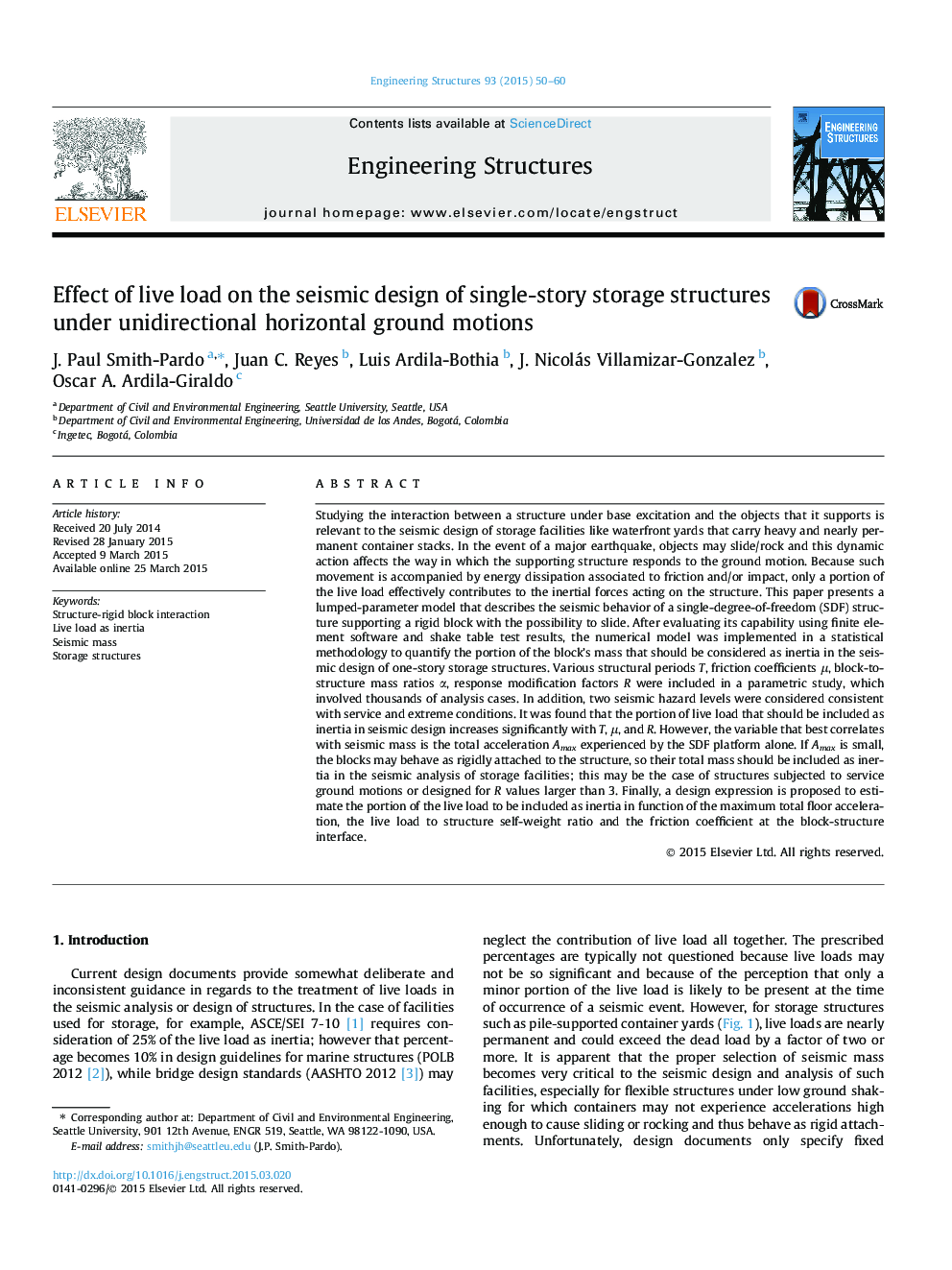| Article ID | Journal | Published Year | Pages | File Type |
|---|---|---|---|---|
| 266309 | Engineering Structures | 2015 | 11 Pages |
•For flexible structures large portion of live load is effective as inertia.•Codes may underestimate the effective live load as inertia for service-level shaking.•Squat containers can behave as rigidly attached in pile-supported yards under earthquakes.•Maximum floor acceleration correlates well with estimated portion of live load as inertia.
Studying the interaction between a structure under base excitation and the objects that it supports is relevant to the seismic design of storage facilities like waterfront yards that carry heavy and nearly permanent container stacks. In the event of a major earthquake, objects may slide/rock and this dynamic action affects the way in which the supporting structure responds to the ground motion. Because such movement is accompanied by energy dissipation associated to friction and/or impact, only a portion of the live load effectively contributes to the inertial forces acting on the structure. This paper presents a lumped-parameter model that describes the seismic behavior of a single-degree-of-freedom (SDF) structure supporting a rigid block with the possibility to slide. After evaluating its capability using finite element software and shake table test results, the numerical model was implemented in a statistical methodology to quantify the portion of the block’s mass that should be considered as inertia in the seismic design of one-story storage structures. Various structural periods T, friction coefficients μ, block-to-structure mass ratios α, response modification factors R were included in a parametric study, which involved thousands of analysis cases. In addition, two seismic hazard levels were considered consistent with service and extreme conditions. It was found that the portion of live load that should be included as inertia in seismic design increases significantly with T, μ, and R. However, the variable that best correlates with seismic mass is the total acceleration Amax experienced by the SDF platform alone. If Amax is small, the blocks may behave as rigidly attached to the structure, so their total mass should be included as inertia in the seismic analysis of storage facilities; this may be the case of structures subjected to service ground motions or designed for R values larger than 3. Finally, a design expression is proposed to estimate the portion of the live load to be included as inertia in function of the maximum total floor acceleration, the live load to structure self-weight ratio and the friction coefficient at the block-structure interface.
